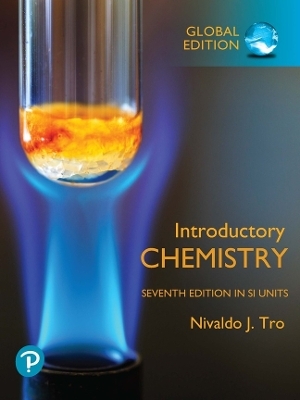
Unconventional Nanopatterning Techniques and Applications
Wiley-Blackwell (Hersteller)
978-0-470-40578-9 (ISBN)
- Keine Verlagsinformationen verfügbar
- Artikel merken
John A. Rogers, PhD , holds the Lee J. Flory-Founder Chair in the College of Engineering at the University of Illinois at Urbana-Champaign. He was selected as one of the Top 50 Research Leaders by Scientific American. Dr. Rogers has authored more than 200 papers and holds nearly sixty patents. Hong H. Lee, PhD , is a Professor in the School of Chemical and Biological Engineering at the Seoul National University, Korea. He is the author of more than 200 papers and two books.
Preface. I. NANOPATTERNING TECHNIQUES. 1. Introduction. 2. Materials. 2.1 Introduction. 2.2 Mold Materials and Mold Preparation. 2.3 Surface Treatment and Modification. References. 3. Patterning Based on Natural Force. 3.1 Introduction. 3.2 Capillary Force. 3.3 London Force and Liquid Filament Stability. 3.4 Mechanical Stress: Patterning of A Metal Surface. References. 4. Patterning Based on Work of Adhesion. 4.1 Introduction. 4.2 Work of Adhesion. 4.3 Kinetic Effects. 4.4 Transfer Patterning. 4.5 Subtrative Transfer Patterning. 4.6 Transfer Printing. References. 5. Patterning Based on Light: Optical Soft Lithography. 5.1 Introduction. 5.2 System Elements. 5.3 Two-Dimensional Optical Soft Lithography (OSL). 5.4 Three-Dimensional Optical Soft Lithography. 5.5 Applications. References. 6. Patterning Based on External Force: Nanoimprint Lithography (L. Jay Guo). 6.1 Introduction. 6.2 NIL MOLD. 6.3 NIL Resist. 6.4 The Nanoimprint Process. 6.5 Variations of NIL Processes. 6.6 Conclusion. References. 7. Patterning Based on Edge Effects: Edge Lithography (Matthias Geissler, Joseph M. McLellan, Eric P. Lee and Younan Xia). 7.1 Introduction. 7.2 Topography-Directed Pattern Transfer. 7.3 Exposure of Nanoscale Edges. 7.4 Conclusion and Outlook. References. 8. Patterning with Electrolyte: Solid-State Superionic Stamping (Keng H. Hsu, Peter L. Schultz, Nicholas X. Fang and Placid M. Ferreira). 8.1 Introduction. 8.2 Solid-State Superionic Stamping. 8.3 Process Technology. 8.4 Process Capabilities. 8.5 Examples of Electrochemically Imprinted Nanostructures Using the S4 Process. Acknowledgments. References. 9. Patterning with Gels: Lattice-Gas Models (Paul J. Wesson and Bartosz A. Grzybowski). 9.1 Introduction. 9.2 The RDF Method. 9.3 Microlenses: Fabrication. 9.4 Microlenses: Modeling Aspects. 9.5 RDF at the Nanoscale. 9.6 Summary and Outlook. References. 10. Patterning with Block Copolymers (Jia-Yu Wang, Wei Chen and Thomas P. Russell). 10.1 Introduction. 10.2 Orientation. 10.3 Long-Range. 10.4 Nanoporous BCP Films. References. 11. Perspective on Applications. II. APPLICATIONS. 12. Soft Lithography for Microfluidic Microelectromechanical Systems (MEMS) and Optical Devices (Svetlana M. Mitrowski, Shraddha Avasthy, Evan M. Erickson, Matthew E. Stewart, John A. Rogers and Ralph G. Nuzzo). 12.1 Introduction. 12.2 Microfluidic Devices for Concentration Gradients. 12.3 Electrochemistry and Microfluidics. 12.4 PDMS and Electrochemistry. 12.5 Optics and Microfluidics. 12.6 Unconventional Soft Lithographic Fabrication of Optical Sensors. Acknowledgements. References. 13. Unconventional Patterning Methods for BioNEMS (Pilnam Kim, Yanan Du, Ali Khademhosseini, Robert Langer and Kahp Y. Suh). 13.1 Introduction. 13.2 Fabrication of Nanofluidic System for Biological Applications. 13.3 Fabrication of Biomolecular Nanoarrays for Biological Applications. 13.4 Fabrication of Nanoscale Topographies for Tissue Engineering Applications. References. 14. Micro Total Analysis System (Yuki Tanaka and Takehiko Kitamori). 14.1 Introduction. 14.2 Fundamentals of Microchip Chemistry. 14.3 Key Technologies. 14.4 Applications. References. 15. Combinations of Top-Down and Bottom-Up Nanofabrication Techniques and Their Application to Create Functional Devices (Pascale Maury, David N. Reinhoudt and Jurriaan Huskens). 51.1 Introduction. 15.2 Top-Down and Bottom-Up Techniques. 15.3 Combining Top-Down and Bottom-Up Techniques for High Resolution Patterning. 15.4 Application of Combined Top-Down and Bottom-Up Nanofabrication for Creating Functional Devices. References. 16. Organic Electronic Devices. 16.1 Introduction. 16.2 Organic Light-Emitting Diodes. 16.3 Organic Thin Film Transistors. References. 17. Inorganic Electronic Devices. 17.1 Introduction. 17.2 Inorganic Semiconductor Materials for Flexible Electronics. 17.3 Soft Lithography Techniques for Generating Inorganic Electronic Systems. 17.4 Fabrication of Electronic Devices. References. 18. Mechanics of Stretchable Silicon Films on Elastomeric Substrates (Hanqing Jiang, Jizhou Song, Yonggang Huang and John A Rogers). 18.1 Introduction. 18.2 Buckling Analysis of Stiff Thin Ribbons on Compliant Substrates. 18.3 Finite-Deformation Buckling Analysis of Stiff Thin Ribbons on Compliant Substrates. 18.4 Edge Effects. 18.5 Effect on Ribbon Width and Spacing. 18.6 Buckling Analysis of Stiff Thin Membranes on Compliant Substrates. 18.7 Precisely Controlled Buckling of Stiff Thin Ribbons. 18.8 Concluding Remarks. Acknowledgements. References. 19. Multiscale Fabrication of Plasmonic Structures (Joel Henzie, Min H. Lee and Teri W. Odom). 19.1 Introduction. 19.2 Soft Lithography and Metal Nanostructures. 19.3 A Platform for Multiscale Patterning. 19.4 Subwavelength Arrays of Nanoholes: Plasmonic Materials. 19.5 Microscale Arrays of Nanoscale Holes. 19.6 Plasmonic Particle Arrays. Acknowledgments. References. 20. A Rigiflex Mold and its Applications (Se-Jin Choi, Tae-Wan Kim and Seung-Jun Baek). 20.1 Introduction. 20.2 Modulus-Tunable Rigiflex Mold. 20.3 Applications of Rigiflex Molds. References. 21. Nanoimprint Technology for Future Liquid Crystal Display (Jong M. Kim, Hwan Y. Choir, Moon-G Lee, Seungho Nam, Jin H. Kim, Seongmo Whang, Soo M. Lee, Byoung H. Cheong, Hyuk Kim, Ji M. Lee and In T. Han). 21.1 Introduction. 21.2 Holographic. 21.3 Polarized LGP. 21.4 Reflective Polarizer: Wire Grid Polarizer. 21.5 Transflective Display. References. Index.
| Erscheint lt. Verlag | 1.2.2009 |
|---|---|
| Verlagsort | Hoboken |
| Sprache | englisch |
| Maße | 150 x 250 mm |
| Gewicht | 666 g |
| Themenwelt | Naturwissenschaften ► Chemie |
| Technik ► Elektrotechnik / Energietechnik | |
| Technik ► Maschinenbau | |
| ISBN-10 | 0-470-40578-3 / 0470405783 |
| ISBN-13 | 978-0-470-40578-9 / 9780470405789 |
| Zustand | Neuware |
| Haben Sie eine Frage zum Produkt? |
aus dem Bereich

